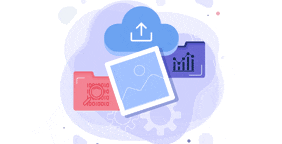
Avoiding blackouts a standard in smart grid adoption
By Max BurkhalterFebruary 3, 2014
Energy providers are investing in smart grid solutions and related serial to Ethernet converters for a plethora of reasons. From reducing expenses of infrastructure maintenance to enhancing peak hour demand response, the benefits are many. However, one of the most obvious advantages provided by smart grid technologies is often left by the wayside - improving blackout avoidance.
Avoiding blackouts and brownouts is often the best reason to invest in improved utility infrastructure. Yet, when listing the many advantages of solutions like smart grid adoption or the integration of higher quality terminal servers, it is often left off. This may be because it is an obvious benefit, but it is still worth heralding the gains provided in this area for energy companies.
However, there are also many lessons that utility companies can learn in the process of eliminating and reducing the risks of blackouts. According to Product Design & Development, many utility providers that have experienced major crises in the past learned valuable lessons from these events that kickstarted their adoption of smart grid solutions and enhanced their understanding of the benefits provided by them.
Introducing renewable energy
One of the key ways that firms are better harnessing smart grids and helping to improve blackout protection is the integration of more renewable energy sources into their networks. By including solar, wind and other power generation solutions, firms aren't just adding a backup source to their primary power plants, but also optimizing energy distribution by incorporating cleaner solutions. This benefits consumers and helps enhance the stability of a network.
Avoiding critical demand
The ability to monitor and adjust delivery to compensate for peak demand is another critical way utility providers can avoid blackouts through smart grid deployment. With smart meters and other technologies supported by serial to Ethernet converters, providers will be able to cope with high demand more effectively, avoiding problems like voltage collapse, which can cause a blackout even without outside influences like a storm. By reducing overall stress on the transmission network, companies are able to optimize power flow at all times and make their grid more reliable as a whole.
Better network protection
A rise in cyberthreats to utility providers is also creating more risk of blackouts. Energy companies are automating more systems, and as such the ability for these systems to be hacked or otherwise affected by cybersecurity issues increases. By modifying the infrastructure with significant smart grid improvements that help pinpoint weaknesses more accurately, improving substation systems and optimize the flow of power from generation to the end user, firms are able to minimize these threats.
Perle offers a range of cost effective serial-to-Ethernet converters to help meet NERC-CIP compliance for the protection of critical cyberassets in substations. The IOLAN SDS HV/LDC Terminal Server is designed to meet harsh environments associated with Power Substations with attributes such as support for substation AC and DC voltage ranges, extended operating temperatures and meeting emission, immunity and safety approvals associated with substation IT equipment.



